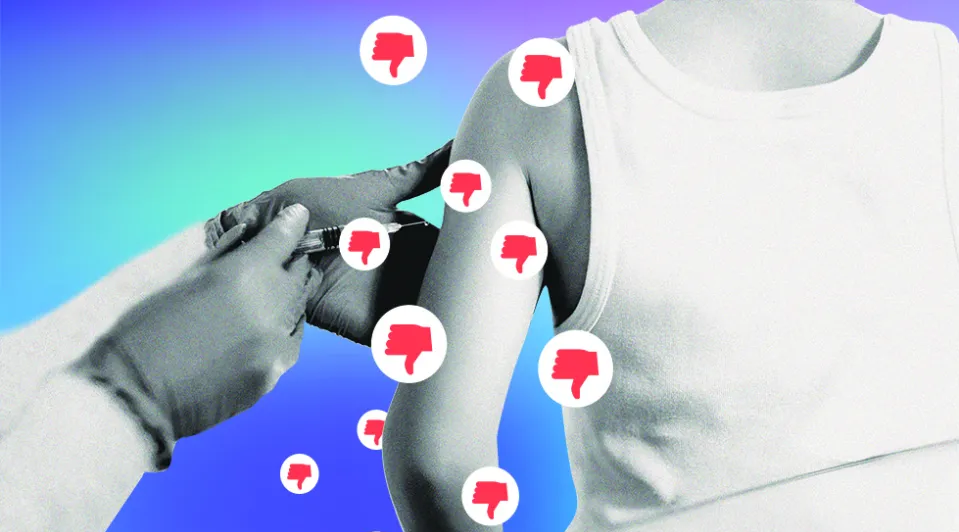Story Highlights
- The marketing of vaccines is one of the most aggressive public health policies today.
- The most common marketing strategy used by stakeholders to promote vaccines is to create a culture that fears disease.
- Fear-based marketing generates vaccine demand and calls into question ethical standards in journalism.
One of the most visible and aggressive public health policies in the United States is the marketing of vaccines. A common strategy adopted by many media sources, medical trade associations, government health officials and pharmaceutical companies to market vaccines is to help create and fuel public fear of disease.1
Creating a Culture Fearful of Disease
Headlines such as the following have become all too common in the media:
- “First Pediatric Flu Death in Three Years Raises New Concerns in Maine”2
- “Opting Out of Measles Vaccine Could Be A Death Sentence for Others”3
- “Why Intentionally Exposing Your Children to Chickenpox Is a Terrible Idea”4
- “Unvaccinated Boy Almost Dies of Tetanus, CDC Says”5
If you carefully examine such articles, the content, words and tone used are presented in a manner that creates fears and elicit anxieties about infectious diseases that were once not considered as dangerous as they are portrayed today.
In order to sell a vaccine, you first have to sell people on the disease itself. The most effective way to generate vaccine demand is to market the disease as a threat of great proportion. The most common underlying theme in such news articles is that everyone is at risk of contracting these diseases and that everyone is at risk of serious complications regardless whether an adult or child is considered healthy.1
This theme is often paired with the claim that “vaccines save lives.” The theme of “threat” and the “solution” provided insinuates to the reader that the disease threatens their very existence and their child’s existence; therefore, triggering a sense of fear and driving the reader to consider vaccination.1
Understanding Fear-based Marketing
There are two main goals of fear-based news programming. The first goal is to grab the viewer/reader’s attention. This is usually done through selecting strategic attention-grabbing words in a headline. Words such as deaths, outbreak, hospitalization, children, etc. are usually used in association with the particular disease. The second goal is to present the viewer/reader with a solution for eliminating the identified fear. In many of these articles, vaccines are always presented as the solution for eliminating the fear of disease.1 6
According to an article in Psychology Today, “The success of fear-based news relies on presenting dramatic anecdotes in place of scientific evidence, promoting isolated events as trends, depicting categories of people as dangerous and replacing optimism with fatalistic thinking.”6
This is reflective of fear-based media articles on infectious diseases. They typically lack context and scientific evidence and include selective reporting which often results in misleading information that triggers anxiety within the viewer/reader, thus driving the demand for vaccines.
Questioning Journalism Today
Historically, the mission of journalists has been to straightforwardly and with professionalism report news that contains accurate facts, fair balance and does not reveal the journalist’s bias or forward a perspective or narrative with a specific political, ideological or business agenda.
Peter Doshi, PhD, an associate editor for the British Medical Journal and assistant professor of pharmaceutical health services research at the University of Maryland School of Pharmacy wrote a feature article in the BMJ explaining the importance of good journalism on the issue of vaccines. He writes:
Good journalism on this topic will require abandoning current practices of avoiding interviewing, understanding, and presenting critical voices out of fear that expressing any criticism amounts to presenting a “false balance” that will result in health scares.7
Dr. Doshi adds…
… And among those uncertainties are the known and unknown side effects that each vaccine carries. Contrary to the suggestion—generally implicit—that vaccines are risk free (and therefore why would anyone ever resist official recommendations), the reality is that officially sanctioned written medical information on vaccines is—just like drugs—filled with information about common, uncommon, and unconfirmed but possible harms.”7
Doshi ends by writing that, “Medical journalists have an obligation to the truth. But journalists must also ensure that patients come first, which means a fresh approach to covering vaccines. It’s time to listen—seriously and respectfully—to patients’ concerns, not demonize them.”7
References:
1 Doshi P. Influenza: Marketing Vaccine by Marketing Disease. British Medical Journal 2013; 346.
2 WGME. First Pediatric Flu Death in Three Years Raises New Concerns in Maine. WGME Apr. 10, 2019.
3 Gupta R. Opting Out of Measles Vaccine Could Be A Death Sentence for Others. The Hill Apr. 10, 2019.
4 Curley C. Why Intentionally Exposing Your Children to Chickenpox Is a Terrible Idea. Healthline Mar. 26, 2019.
5 CBS/AP. Unvaccinated Boy Almost Dies of Tetanus, CDC Says. CBS News Mar. 8, 2019.
6 Serani D. If It Bleeds, It Leads: Understanding Fear-Based Media. Psychology Today June 7, 2011.
7 Doshi P. Medical response to Trump requires truth seeking and respect for patients. British Medical Journal 2017; 356.














4 Responses
You can add fear-based judicial rulings to that. In NY the judge ruled against 5 families that didn’t want to be forced vaccinated saying, “A fireman need not obtain the informed consent of the owner before extinguishing a house fire,” and “Vaccination is known to extinguish the fire of contagion.” In other words, a the-sky-is-falling emergency.
This allowed him to ignore all the arguments brought: No science in medical objections, religion not up to his doctrinal specs, and moral objections were misplaced. He could have just said, “I don’t care what you think.”
Meanwhile the commentariat on the article were in full-throated support. They drank the Kool-aid of allowing the government and profiteering corporations to do whatever they want to us. They are fools if they think it stops with this “emergency.” All types of forced vaccinations for all of us are already on the agenda. In those immortal words: Those who would sacrifice their freedom for safety deserve neither.” And neither shall we have.
The intensity of the affect that journalism attempts to arouse in its publications about vaccination is in direct proportion, and a direct consequence of the need to disguise and avoid an honest discussion of the actual science. In other words, the bigger the lie, the bigger the dust-cloud of obfuscation that needs to be raised.
Add DHS to fear-based marketing. Joe Liberman and Tom Ridge emerged to say that the measles outbreak in NY was using up precious resources. They then compared measles to nuclear war, Spanish flu, plague, Ebola and Zika. Mandatory vaccinations for everyone for every thing is the only way to keep us safe!
BTW, the top 5 vaccine manufacturers had revenue of over $187 billion in 2018. They forecast rapid growth. Between forced vaccinations and new strains of disease entering the country, their future is bright.
What are the precautions if we have given vaccinations to our child.
As i have given my little one all vaccinations and now i know that we don’t need to give vaccines.
Is there any remedy so she not get infected by these vaccines.